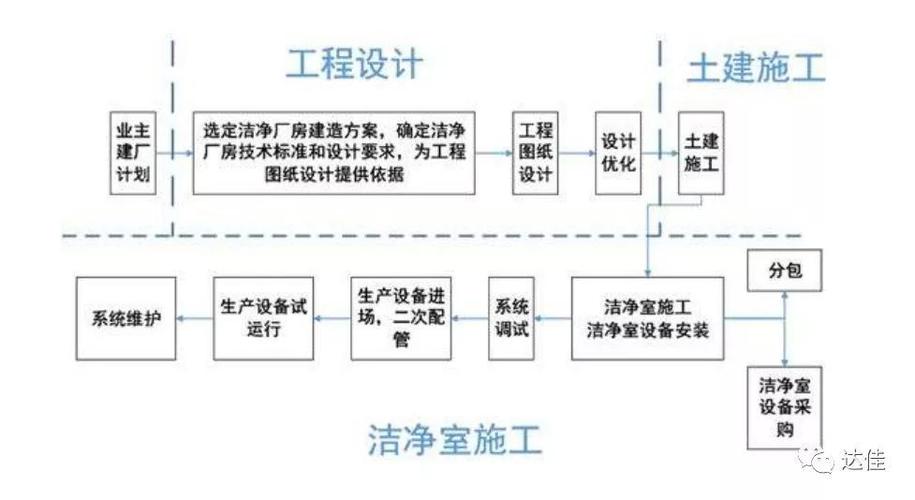净化施工工程施工流程
- 科普
- 2024-04-29
- 494
Title: Comprehensive Construction Plan for Purification Interior Renovation

Introduction:
Purification interior renovation involves implementing measures to enhance indoor air quality, reduce pollutants, and create a healthier living or working environment. A wellexecuted construction plan is essential for achieving these objectives. Here's a comprehensive construction plan tailored for purification interior renovation projects.
1. Preliminary Assessment:
Conduct a thorough assessment of the existing indoor environment, including air quality, potential sources of pollution, ventilation systems, and building materials.
Identify specific pollutants such as volatile organic compounds (VOCs), formaldehyde, mold, and particulate matter.
2. Design Phase:
Collaborate with architects, engineers, and interior designers to develop a renovation plan that prioritizes air quality improvement.
Select building materials, finishes, and furnishings with low VOC emissions and formaldehyde content.
Design ventilation systems to ensure adequate airflow and filtration.
3. Construction Materials and Methods:
Use ecofriendly and lowemission building materials such as lowVOC paints, adhesives, sealants, and flooring materials.
Employ construction methods that minimize dust and airborne contaminants, such as wet demolition and dust containment barriers.
Install air purification systems with HEPA filters to remove airborne particles and contaminants during construction.
4. Ventilation and Air Filtration:
Upgrade ventilation systems to increase air exchange rates and improve indoor air quality.
Install highefficiency air filters to capture particulate matter, pollen, mold spores, and other pollutants.
Incorporate natural ventilation strategies such as operable windows and passive ventilation systems where feasible.
5. Indoor Environmental Monitoring:
Implement a comprehensive indoor air quality monitoring program during and after construction to track pollutant levels and verify the effectiveness of purification measures.
Utilize sensors and monitors for VOCs, formaldehyde, humidity, temperature, and particulate matter to ensure optimal indoor air quality.
6. PostConstruction Testing and Certification:
Conduct postconstruction air quality testing to validate that pollutant levels meet established standards and guidelines.
Obtain certifications or endorsements from relevant authorities or organizations to demonstrate compliance with indoor air quality standards and regulations.
7. Occupant Education and Maintenance:
Provide occupants with education and training on maintaining good indoor air quality, including proper ventilation practices and the selection of lowemission cleaning products.
Establish a maintenance plan for ventilation systems, air filters, and other purification equipment to ensure continued effectiveness over time.
Conclusion:
A wellexecuted purification interior renovation requires careful planning, selection of appropriate materials, implementation of effective construction methods, and ongoing monitoring and maintenance. By following this comprehensive construction plan, you can create a healthier and more comfortable indoor environment for occupants while minimizing the impact of pollutants on their health and wellbeing.
上一篇
伊春房产交易中心查询
下一篇
丽水装修价格